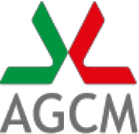ACCORDI INTERBANCARI “ABI-CO.GE.BAN.”
PRESS RELEASE
PRESS RELEASE
BANKS: ANTITRUST AUTHORITY ESTABLISHES FURTHER REDUCTIONS IN INTERBANK COMMISSIONS FOR DEPOSIT, PAYMENT AND BANCOMAT SERVICES WITH MINIMUM CUTS OF BETWEEN 11% AND 64%. ABI AND CO.GE.BAN COMMITMENTS ACCEPTED.
Reductions in five interbank commissions - the prices banks charge each other and which become the basis for prices to the end-customer - varying from a minimum of 11% on Bancomat withdrawals from the ATMs of other banks to 64% for fast RID (Direct Interbank Transfer) services. This was the decision of the Italian Competition Authority at its meeting on 19 April 2007, in accepting and making obligatory the commitments proposed by ABI and Co.Ge.Ban following an investigation into possible anti-competitive agreements.
On 29 March 2006 the Authority launched proceedings to ascertain whether there were violations of the antitrust rules in the collective fixing by the banks' associations of the maximum interbank commissions for Bancomat cash withdrawals from the ATMs of other banks and for the payment services known as RID (Rapporti Interbancari Diretti, or Direct Interbank Transfers) and Ri.Ba (Ricevuta Bancaria Elettronica, or Electronic Bank Receipt). At a meeting on 23 November 2006, the Authority arranged for the publication of the commitments presented at that time by ABI and Co.Ge.Ban and invited interested third parties to express their observations within 30 days. On 26 February 2007, after this consultative process had been completed, ABI and Co.Ge.Ban proposed new commitments, further reducing the interbank commissions.
The commitments are the result of changes in the method of calculating interbank commissions with respect to the criteria set by the Bank of Italy in its own earlier decision on agreements of this kind.
Specifically, the parties, following the first version of the commitments, have already done away with the commission on the 'Ri.Ba. with intermediary' service, merged the ‘utility bill RID’ and ‘business RID’ commissions into a single fee structure and reduced the remaining commissions. These reduced charges result from the application of a new method of calculation which looks only at direct costs and now excludes, for instance, the items called "indirect costs” and “mark-up” (profit margin), as well as reflecting cost savings from changed business processes.
On 26 February 2007, the parties also undertook to set minimum future commission charges at levels lower than those obtaining in January; these new commissions are to be calculated from July 2007 after a new survey of costs has been carried out on a more representative sample of banks than the one currently used. The lower charges have been calculated on the basis of stringent efficiency criteria, excluding the 50% of banks having the highest costs, with specific corrective factors for each individual commission.
Lastly, a new assessment will be made every two years to see if commission charges can be further reduced as a result of cost savings, it being understood that the previous survey in any case represents a price cap.
In approving these commitments, the Authority emphasized that it will continue to monitor the progress of commissions, reserving the right to determine whether variations in the European context, in the way services are offered or in the structure of the Italian banking system should mean further reductions in charges.
The Authority has issued its finding on the supposition that the savings from reduced interbank costs brought about by these proceedings will be largely, if not entirely, passed on in reduced fees to the end-consumer for Bancomat withdrawals and to businesses for Ri.Ba and RID services, as would be expected in a market based on fair business practices. If the Authority's monitoring shows that the benefits have been restricted to the banks themselves, it will take appropriate action.
Furthermore, the Authority expects businesses that make wide use of the receipts services in question, such as those that receive payment of utility bills via direct bank debits, to pass on the reduced bank charges to end-consumers.
In this context, the inclusion in the commitments by ABI and Co.Ge.Ban. of an undertaking to publicize present and future interbank commissions on their website will introduce a measure of interbank cost transparency; since those costs underlie the prices charged to the clientele, bank customers will be able to take on a more active attitude.
The following table shows the fee structures proposed by ABI and Co.Ge.Ban
| Interbank Commission at time proceeding began
| Fee at time proceeding began (euros)
|
Interbank Commission following published commitments | Fee applicable following published commitments, beginning in January 2007 (euros)
| Maximum fee following further commitments (euros)
| Minimum percentage reduction since beginning | ||
| RiBa receipt
| 0.95 | RiBa receipt
| 0.71 | 0.66 | 31% | ||
| RiBa receipt with intermediary
| 0.34 |
ABOLISHED | |||||
| RiBa not honoured
| 0.84 | RiBa not honoured | 0.57 | 0.41 | 51% | ||
| RID business receipt | 0.66 |
RID | 0.39 |
0.28 |
58% | ||
| RID utility bill receipt
| 0.52 | ||||||
| 25% | |||||||
| Fast RID receipt
| 2.5 | Fast RID receipt
| 1.08 | 0.90 | 64% | ||
| Bancomat
| 0.75 | Bancomat
| 0.67 | 0.67 | 11% | ||
Rome, 20 April 2007

